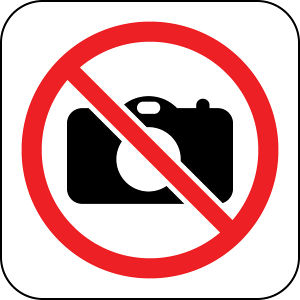| This section is actively undergoing a major edit for a while. To help avoid edit conflicts, please do not edit this section while this message is displayed or contact the editor (Steiny) of this page. | This page was last edited at 14:47, 1 November 2013 (UTC) 4418 days ago. |
Hint:
25.10.2013: UPrenner: create the article page
01.11.2013 UPrenner: work-in-progress
Overview
Scenes of the motion editor is a pure submodule in DMXControl 2 and thus only cue module or chaser module to find, is when there using the button « Add » a new step « Motion cue » inserted or edited. The motion cue itself is ultimately only the assignment of different devices (with pan + tilt feature) to the previously created characters and its configuration. (See figure editor). (Each motion cue includes thus always just exactly a figure at the time, but access to all previously created characters and can manage.)

|
| Figure 1: The motion cue editor |
Description
As soon as a figure has been selected and at least a device was added to the list, the one with the button can « Cue test » being looked right below. During this test cycle this one can live « Duration » « Repetitions » and « Wait time » you adjust, these are then played exactly again and again in this order. (In our example the 4 scanners turn 3 x the spiral all and then 10. 8 sec. wait on the final position at the same time for 5. 1 sec.) The function beat triggered cannot become live and is visible first playing the scene. (Duration is by the beat replaces, the waiting time remains unchanged nevertheless.) We would become the attitude of now « Absolute » on « Relative » alter, the next spiral pass would go exactly in bulk in that place so where the commercial just is. (Caution is, however, required here since himself scanning constructions then reconcile the debit positions outside the mirror be rich far at and it therefore comes to a modified form of the figure this one.)
| |
Selecting always only Pan+Tilt of the device to avoid ungewünschte side-effects. |
Some correction attitudes are under the device list for the Bewegungszene still. The figure can be scaled and/or moved for any listed device here. Authorities of the figure graphically are overlaid in color separated in the black preview pane. So the changes (here 4 different scalings of the spiral) can be recognized well in relation to each other.
Offset
The offset only can be recognized when at least 2 equipment is available in the same motion cue and has adjusted a different offset. The device carries away the figure deferred (unity in steps).
| |
The figure is changed at an active offset, is that way to respect stehts that aren't more greatly the offset of all equipment than the available steps of a figure. |
Wird « Sequenzieller Offset » aktiviert, warten alle anderen Geräte mit einem geringeren Offset auf die Vollendung der Figur derer Geräte mit höherem Offset. Ist die Funktion deaktiviert wird ohne zu Warten die Figur erneut abgefahren.
TIP: Um den Unterschied zu verdeutlichen empfielt es sich 4-6 Scanner sehr nahe beieinander zu montieren (Mit Easy View können diese sogar ineinander geschoben werden) Und alle Scanner einen Kreis mit sehr wenigen Schritten abfahren zu lassen. Bei Nicht-sequenziellen Offset sind permanent alle Spots einzeln zu erkennen. Ansonsten überlagern diese sich am Anfang und Ende der Figur ähnlich einer Staffelung.
Color and pattern
Soll mit einer Bewegungszene nicht nur Pan+Tilt eines Gerätes verändert werden, so ist dies ebenfalls möglich. Dafür bietet die Liste « Zugeordnete Szenen » die Möglichkeit jedem Schritt der vorliegenden Figur einen Befehl zuzuordnen. Hier können im einfachsten Fall Befehle wie Gobo oder Farbe ändern eingefügt werden. Aus Performancegründen sollte jedoch sehr sparsam mit dieser Möglichkeit umgegangen werden, die auch beliebige Verschachtelungen in der Theorie zulässt.
Controls
Alle Steuerelemente können sowohl mit der Maus festgehalten und gezogen werden als auch mit den Pfeiltasten (bei vorheriger Selektion) verändert werden. Zweiteres bietet sich insbesonder für eine Feinjustierung an, wenn der Schieberegler zum Springen neigt. Sämtliche Geräte können individuell für die Szene eingestellt werden. So ist eine Skalierung, Verschiebung, Invertierung aller X (Pan) und Y(Tilt) Werte unabhängig voneinader Möglich und kann von Szene zu Szene variieren. Auch ein gegengleiches Laufen zweier identischer Figuren ist möglich, da pro Gerät die Checkbox « Figur rückwärts abspielen » gesetzt werden kann.
| |
Mit Bewegungsszenen können auch langsame Farbübergänge realisiert werden, indem man den Parametern X und Y je einen Farbkanal zuweist. Darüber hinaus sind weitere Effekte wie eine gesteuerte Gobo-Auswahl etc. möglich. |